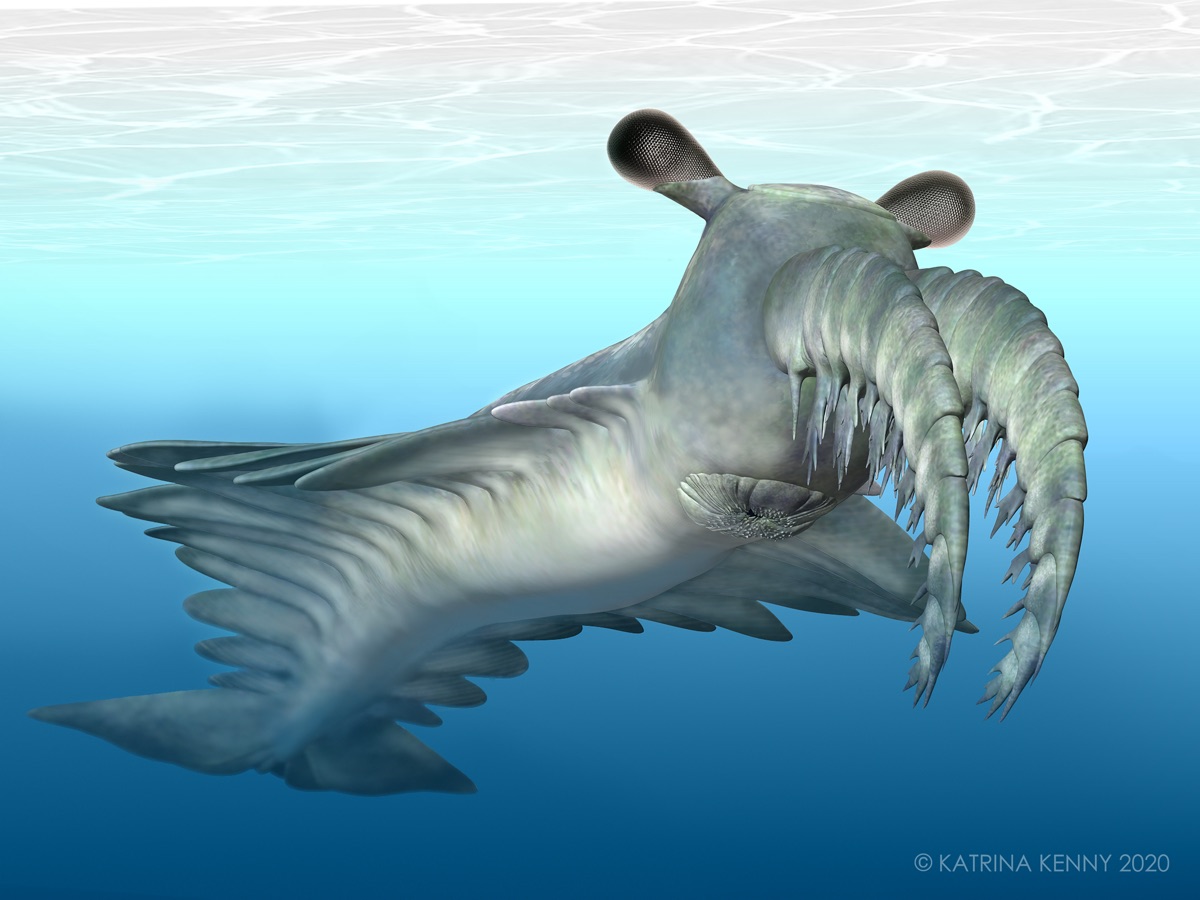First discovered in the late 1800s, Anomalocaris canadensis—which means “weird shrimp from Canada” in Latin—has long been thought to be responsible for some of the scarred and crushed trilobite exoskeletons palaeontologists have found in the fossil record.
“That didn’t sit right with me,” said lead author Russell Bicknell, who led the investigation while at UNE before moving to his current position as a postdoctoral researcher in the American Museum of Natural History’s Division of Paleontology.
“Trilobites have a very strong exoskeleton, which they essentially make out of rock, while this animal would have mostly been soft and squishy.”
The research team, which included other scientists from UNE’s Palaeoscience Research Centre, professors John Paterson and Steve Wroe, and researchers from Germany, China, Switzerland, the United Kingdom, used new techniques to establish that A. canadensis was not a shell-cruncher, but rather a fast, agile hunter of soft-bodied prey.
Earlier research on the armour-plated, ring-shaped mouthparts of A. canadensis established doubt about the animal’s ability to process hard food. The study set out to investigate whether the predator’s long, spiny front appendages could do the job instead.
The first step for the research team was to build a 3D reconstruction of A. canadensis from the extraordinarily well-preserved—but flattened—fossils of the animal that have been found in Canada’s 508 million-year-old Burgess Shale. Using modern whip scorpions and whip spiders as analogues, the team was able to show that the predator’s segmented appendages were able to grab prey and could both stretch out and flex.
A modeling technique called finite element analysis was used to show the stress and strain points on this grasping behaviour of A. canadensis, illustrating that its appendages would have been damaged while grabbing hard prey like trilobites.
Finally, the researchers used computational fluid dynamics to place the 3D model of the predator in a virtual current to predict what body position it would likely use while swimming. This aspect of the study indicated that the outstretched appendages of A. canadensis created minimal drag when the animal was swimming, supporting the idea that speed was an important part of its feeding strategy.
The combination of these modelling techniques—the first time they’ve all been used together in a scientific paper—paint a different picture of A. canadensis than was previously assumed. The animal was likely a speedy swimmer, zooming after soft prey in the water column with its front appendages outstretched and forward-facing.
“Previous conceptions were that these animals would have seen the Burgess Shale fauna as a smorgasbord, going after anything they wanted to, but we’re finding that the dynamics of the Cambrian food webs were likely much more complex than we once thought,” Dr Bicknell said.


